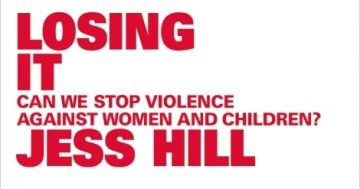Helena Morrissey* says trying to close the gender pay gap by training women to be more assertive undermines the valuable differences between how men and women work.
 I’m confident that you know some incredible women.
I’m confident that you know some incredible women.
Perhaps a leading female executive at your organisation, a teacher with the amazing ability to bring out the best in her pupils or a fantastic single mother who works extra hours to provide for her family.
You may know women who work full-time and help out generously in their local communities, women who take risks to campaign for a better world or are simply great neighbours to lonely elderly residents.
You may well be an incredible woman yourself, following in the footsteps of many generations of wonderful women, each building on the achievements of the last.
And yet gender equality — by which I mean equality of opportunity and fair treatment, without discrimination or prejudice, for men and women, whatever colour, creed or background — remains frustratingly elusive across the globe.
There has been real progress in some countries, but it is clearly unfinished business.
Yes, there are (a few) more women at the top, but many others remain discouraged about their prospects, or conflicted in their multiple roles as mothers or carers with careers.
And men, too, may feel unhappy, straitjacketed by societal expectations about their own roles.
What can we do differently to create better outcomes for more people?
Why have all our collective efforts over many years not yet translated into the result that seems so obvious in 2018?
I’m convinced that we have been tackling gender and other inequalities in good faith but in ways destined to disappoint.
I’m also convinced that, today, we have an unprecedented opportunity to achieve a real breakthrough; but to seize the moment, we need to first see gender diversity through a different lens.
In most organisations, our approach has tended to revolve around special diversity initiatives — helpful at providing focus, but by their nature peripheral rather than central to the main event.
Often, the initiatives are led by underrepresented groups, but women talking to women about women’s issues will only get us so far.
And most “diversity programs” have been tacked on to long-established ways of working and managing people.
They are incremental steps effectively aimed at fitting more women and other diverse talent into a system of work and career patterns that evolved long before the digital revolution, before women were (at least) as highly educated as men, and certainly long before the term “work–life balance” was coined.
We’ve been fiddling around the edges of a “system” that perhaps isn’t really relevant for anyone today.
Instead, we now have the opportunity to shake up how we work, live our lives, love and bring up families together, men and women, as partners.
Partners that are equal, but bring diverse skills and ideas to the table, improving our collective intelligence and ability to solve today’s complex problems.
Four factors have coincided to create this opportunity.
First, the digital revolution that has already shaken up so many aspects of our lives also enables organisations to devise working practices that are more focused on outcomes than on hours at the same desk.
Shaking up the rulebook — for example, defaulting to all roles being “agile” (with a few necessary exceptions) rather than granting women a special favour to work flexibly, can lift engagement and productivity — while improving diversity.
Second, the nature of effective leadership is changing in a networked world.
People will no longer be told what to do by leaders they don’t particularly trust.
Leaders today need to earn the right to lead, to inspire not force, be emotionally intelligent and able to connect with customers, employees and other stakeholders.
The idea of closing the gender pay gap by training women to be more assertive undermines our valuable differences; instead, organisations need to work out how to enable women to be women at work.
Gender-intelligent talent development is the way forward.
Third, the next generation expects work–life balance.
In the UK, a 30 Per Cent Club survey involving more than 20,000 university students showed that more than 90 per cent of both male and female respondents prioritised “work–life balance” as a career consideration.
The next generation does not just expect women to have career opportunities, but for men to play a significant role in their future family’s life as well.
Organisations seeking the best and brightest talent are aligning their approaches to a changing definition of success.
And last but not least, increasing longevity — the “100-year life” — is shaking up the traditional career path chronology.
Motherhood is certainly not the only reason women are underrepresented at the top of business and politics, but it’s a factor.
So often, the point when women have children has coincided with the moment their male colleagues are throwing everything at their career.
With longer working lives and possibly several careers, that linkage will be broken.
These multiple trends are combining to create a brand-new context to aim higher in our gender equality efforts.
It’s not a question of intensifying past initiatives.
Today, as other forces alter how we all work, live and relate to each other, we can and must be bolder in our ambition.
Working with men, women can contribute to the creation of a world where far more of us have choices, a greater ability to be ourselves, to achieve life goals including — but not limited to — our careers.
And along the way, let’s make sure we don’t replace one form of injustice with another.
Yes, we all know many incredible women, but after centuries where one half of humanity has been regarded as effectively superior to the other, what would be the benefit in just flipping things around?
The far greater prize is balance.
* Helena Morrissey is founder of the 30 Per Cent Club, former chair of the UK’s Investment Association and 2017 Financial Times Business Leader of the Year.
This article first appeared at www.theglobeandmail.com.











